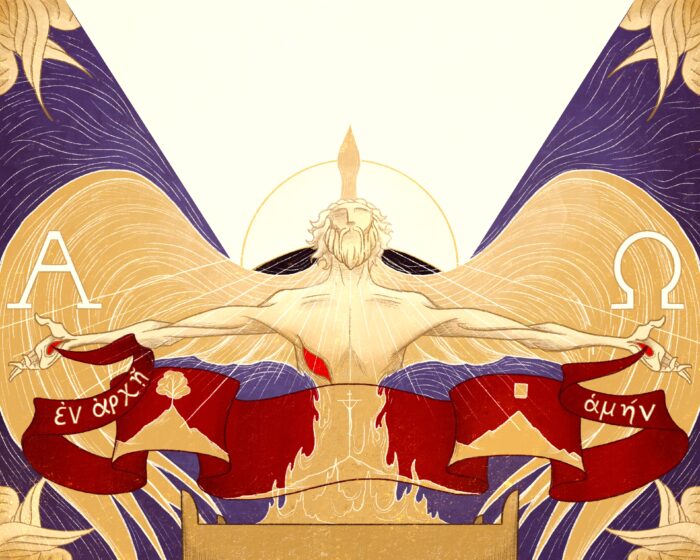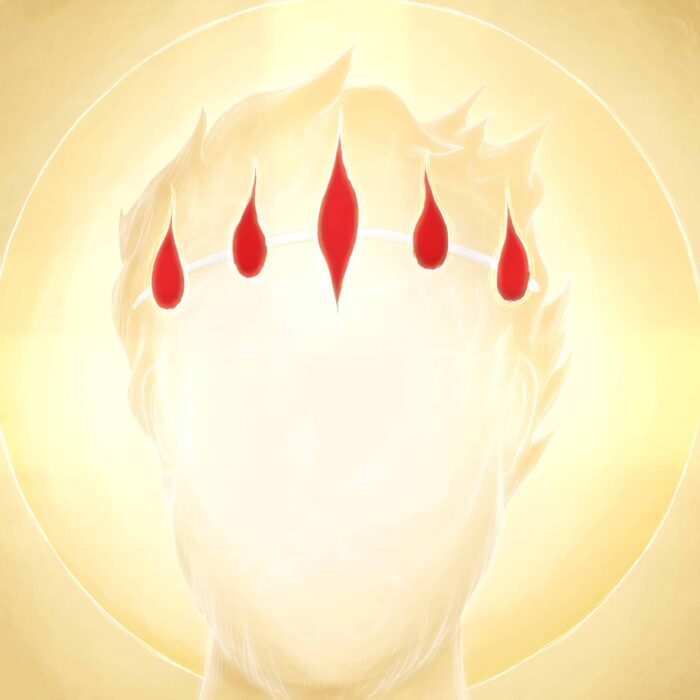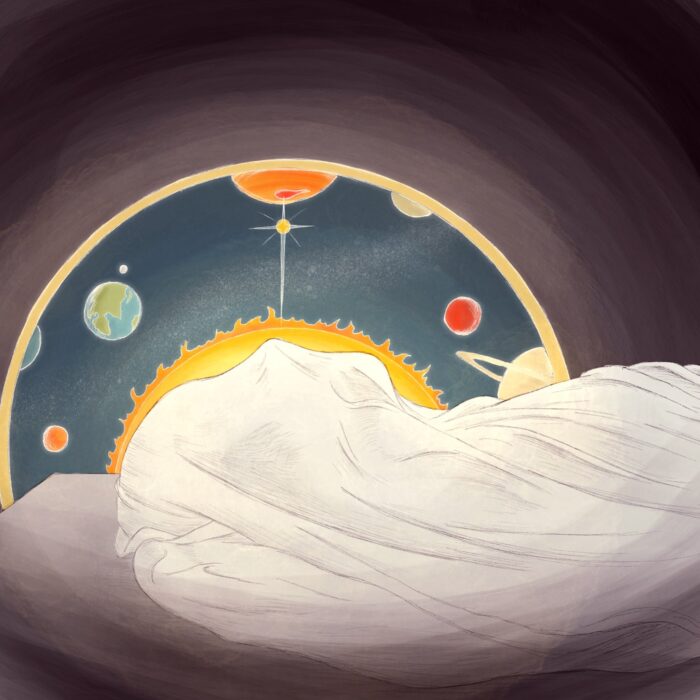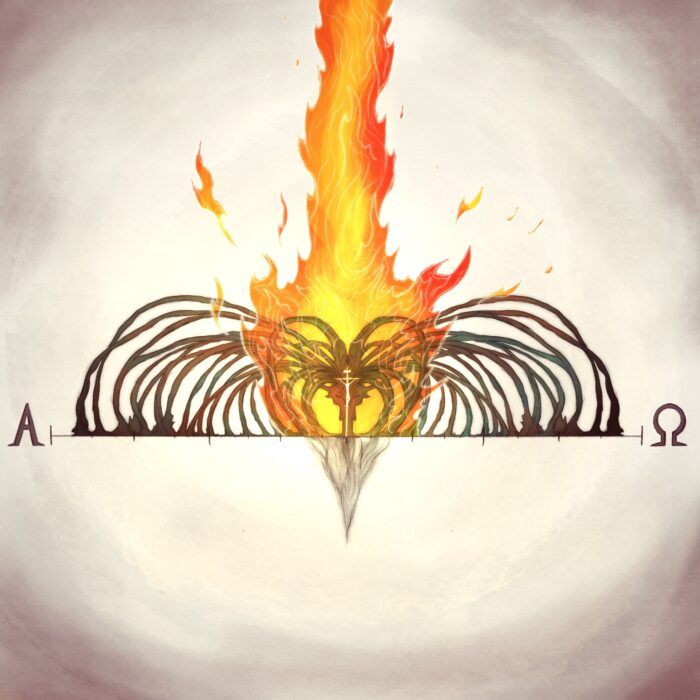Hebrews 9:14, ‘Christ…through the eternal Spirit offered Himself without blemish to God…’
This text is primarily about the superiority of Jesus’ death in relation to the sacrifices of the Old Covenant). However, what I’m focusing on in today’s visual exegesis is the absolutely reality-re-shaping implication that is tucked away inside the author’s main argument: Namely, that the temporally and spatially un-bounded Holy Spirit is Himself the personal medium through whom Jesus’ spatial-temporal death on the cross took place…
In other words, Jesus’ death on Calvary is a verifiably historic occurrence that happened at a specific place and time. That is for sure. However, at the same time, that death was carried out as an atoning sacrifice to God through the medium of the Holy Spirit, who is unbounded by time and space. This means that the suffering, the sacrifice, the self-giving of Jesus Christ on the cross is simultaneously a particular historic event with a beginning, middle, and end *and* an eternal reality that is taking place unceasingly in all places and at all times…We might also add to this that the resurrection of the crucified Jesus—also achieved through the agency of the Spirit, Rom. 1:6—is an equally eternal, equally ever-present reality (Thus, Jesus is the Lamb slain, and yet Living, from the foundation of the world Rev.13:8, etc).
In this way, every splinter of space and flicker of time is embraced within, sustained through, permeated by, and defined in relation to the death and resurrection of Jesus Christ….Or, to put it more personally…Christian, this means that every moment of your life is carried out *within* Christ’s dying love for you on the cross (by which all your sorrow and fear and shame and sin are, even now, *being borne*) even as every moment of your life is carried out *within* Christ’s risen victory (by which, that same sorrow, fear, shame, and sin are, even now, transfigured to a beauty that is presently apprehended by—and one day soon will be beheld by—faith).
So, in today’s image, I tried to show Jesus’ death as simultaneously, historical and eternal…and to point to some of the implications of this dynamic.
First off, the red banner in the center of the image represents space and time. The mountain of Eden is pictured on the left hand side (the beginning), and the mountain of Zion with the New Jerusalem coming down upon it, is depicted on the right (the end). These correspond to the Greek letters ‘Alpha’ and ‘Omega.’ At the center of history is the cross.
Outside of this banner is ‘eternity,’ that is to say, timelessness and spacelessness. The altar at the bottom of the image is set up in this eternal realm and the fire blazing up from this altar transforms into the figure of a dove. This depicts the eternal self-offering of Christ through the flame of the Holy Spirit. Note that the Spirit/Fire intersects the banner of history at the moment of the crucifixion, such that Jesus’ death on the cross happens within time, but also takes place through the ‘eternal Spirit,’ and so is an eternal event.
Thus, outside of time (and within the ‘dove’ of the Spirit), I’ve depicted Jesus Christ in the act of offering Himself to the Father. The banner of history begins and ends with His nail-pierced hands as a way of showing that the eternally slain and risen Jesus is the beginning and end, the first and the last, the all-defining principle of created reality. And, to emphasize that not only His death, but also His resurrection exist eternally through the Spirit, I’ve depicted the open mouth of the tomb behind Jesus’ head, also ‘outside’ of time.
Finally, the beams of light shining from the face of the eternally anastasiform Christ illumine the entire span of history, reminding us that—wherever a shaft of divine glory intersects creation, it is nothing other than the glory of the crucified and risen One (Heb.1:3).




